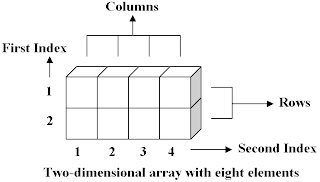There are two kind of subroutine in Pascal : Function and Procedure. The difference between these subroutines is in return value. Function gives a return value, but procedure doesn’t. The structure of function and procedure are the same :
Here is the example of procedure and function :
program FunctionAndProcedure;{$APPTYPE CONSOLE}
uses
SysUtils;
procedure Add1(x, y : integer);
var
z : integer;
begin
z := x + y;
writeln(x,' + ',y,' = ',z,' (using procedure)');
readln;
end;
function Add2(x, y : integer) : integer;
begin
Add2 := x + y;
end;
begin
Add1(25,10);
writeln('25 + 40 = ',Add2(25,40),' (using function)');
readln;
end.
You can download the complete code here.
























